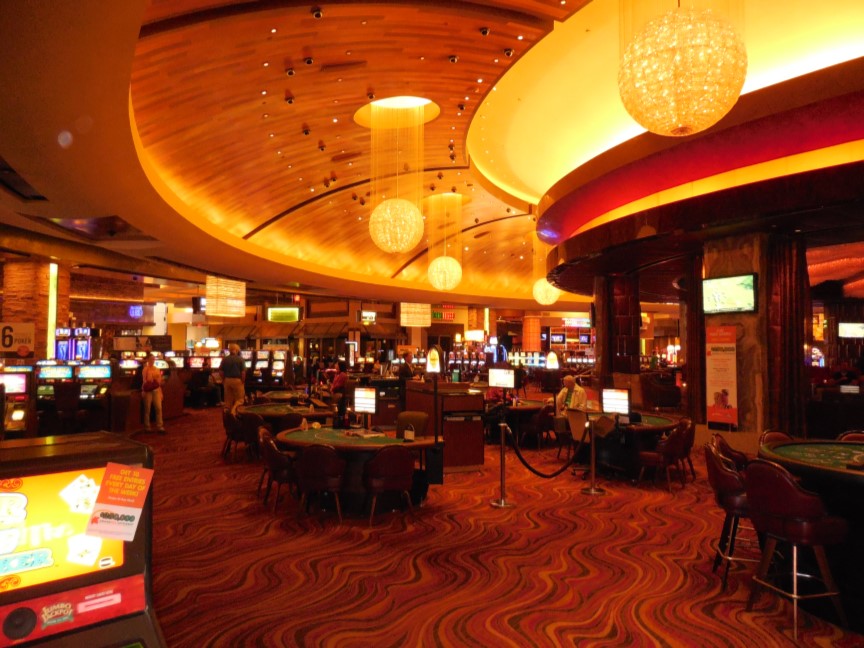
Indian Reservation or Tribal casinos have been a key component of the American casino and gambling industry for decades. Out of the 562 recognized tribes in the country, around 200 operate full casinos and gaming resorts. In California alone, there over 60 Native American-operated full casinos that support our indigenous tribes, with profits covering everything from education to charity work and health care, enabling real self-sufficiency for these communities.
It All Started in Seminole
Tribal casinos currently generate more revenue than Atlantic City and Las Vegas casinos combined. However, the phenomenon of gambling in tribe-owned casinos didn’t begin until the late 1970s. The Seminole Tribe in Florida opened up a high-stakes bingo hall, which despite being hugely popular with residents and tourists alike was illegal at the time, according to state law. Local authorities tried their best to shut down the operation, but the tribe wasn’t giving up without a fight, and a number of lawsuits soon followed. As the decade drew to a close, the Supreme Court gave its official ruling: The Seminole Tribe had recognized tribal sovereignty, and as such, the state did not have the right to regulate the activities of the reservation or even tax its occupants.
Such a groundbreaking ruling set a precedent that enabled similar decisions in future cases. In the Cabazon decision in 1987, the Supreme Court ruled that provided gaming for money activities were legal in the state where the reservation was based, and as such, the state once again couldn’t regulate its activities. This ruling formally solidified in the Indian Gaming Regulatory Act, which allows recognized tribes across the country to open and operate casinos after conferring with their state. In the cases where states refuse to negotiate, the Secretary of the Interior decides, usually in favor of the Indian tribe.
Famous Indian Casinos in California
There is a total of 151 tribal-owned gaming casinos and separate cardrooms operating within the state of California, including one of the oldest in the country. The Cabazon Band of Mission Indians’ casino has transformed from the underground operation it once was into the Fantasy Springs Resort Casino, a sprawling entertainment complex with 250 rooms and suites, 100,000 square feet of conference space, 40 gaming tables and 2,000 slot and video gaming machines.
The San Manuel Casino, owned by the San Manuel Band of Mission Indians, is another famous Californian gaming center. Located in the Inland Empire region, this casino is known for winning multiple awards, including Inland Empire Magazine’s Best Casino 2018.
The Augustine Casino is a community venture.
One of the most remarkable casinos to find in the state is the Augustine Casino, situated on the eastern edge of the Coachella Valley. This casino has become an economic center for the Augustine Band of Cahuilla Indians, one of the smallest recognized tribes in the state, which was almost in danger of dying out in the 1980s. Mary Ann Martin Vance, the late mother of the current tribal chair Amanda Vance, almost single-handedly transformed the fortunes of the tribe, revitalizing its 500 acres into an expanding reservation that now employs over 400 people in its casino, gaming commission and tribal government.
Casino Gaming in the Digital Age
Thanks to ongoing technological innovation and developments like the integration of virtual reality into games, in some U.S. territories, the online gaming sector began to overtake traditional land-based casinos in both revenue and popularity. Online and mobile casinos are more accessible than their brick-and-mortar counterparts, requiring not much more than a strong internet connection, so consequently, they have a much broader appeal.
However, the latest revenue figures posted by Atlantic City casinos indicate that the traditional gaming houses remain strong, with March, specifically, showing much higher profits. Unlike their commercial counterparts, reservation casinos aren’t required to post their annual revenue figures, so there’s no recent public data available that can indicate how much of a threat that digital casinos pose. However, a 2017 inquiry into the revenue generated by tribal casinos for the 2015 financial year indicated a slight increase in profits compared to commercial casinos ($30.5 billion, compared to $29.8 billion), with the 72 California-based gaming reservations accounting for the bulk of that figure. Since more Native American-owned casinos and resorts have opened since then, it’s safe to assume that despite all their technological advancements, online casinos can’t quite overtake these community ventures.
Author: Mel Wong
–